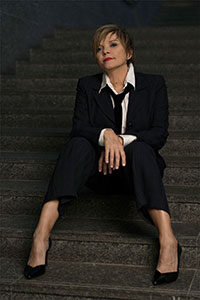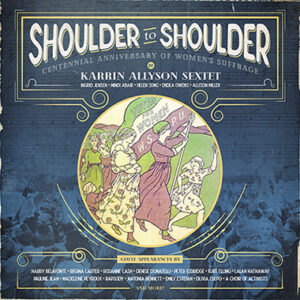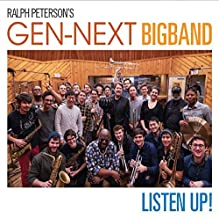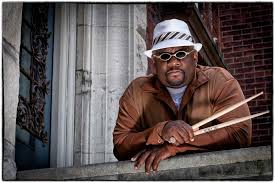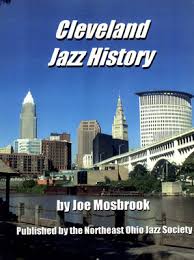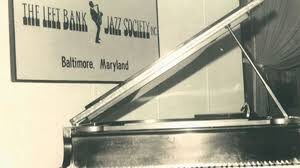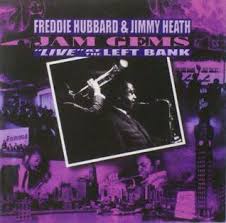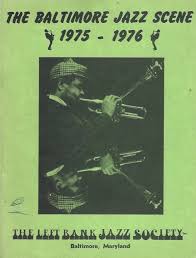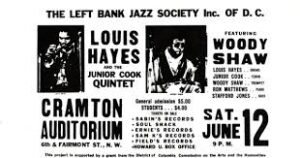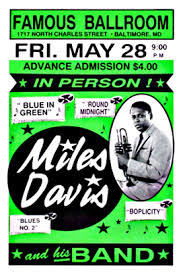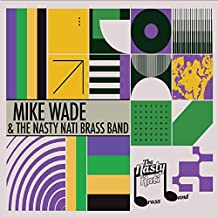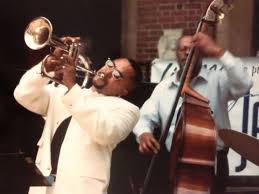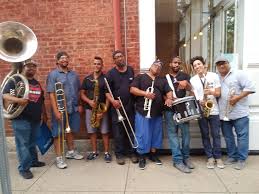On January 28, 2021 the woman no less than Nelson Mandela declared “South Africa’s First Lady of Song”, Sibongile Khumalo passed on to ancestry. I first met Sibongile on a 2005 trip to the Cape Town Jazz Festival, where she was a fixture. This is a woman whose stylistic range was as broad as any – from Verdi operas to the outer edges of jazz expression.
When I returned to that beautiful country in 2007 I was delighted to see that Sibongile was slated to play the festival again, this time in the company of one of our greatest drummer-bandleaders, NEA Jazz Master Jack DeJohnette. Jack had assembled a band he called the Intercontinentals, which also included the innovative British trumpeter Byron Wallen, pianist Danilo Perez, saxophonist Jason Yarde, and bassist Jerome Harris. I’m hopeful that somewhere in his archives Jack has recordings of that band that will be released widely, the band was that exceptional!
As we reflect on the passing of Sibongile Khumalo I thought I’d share a reprise of Suzan Jenkins and my earlier interview with her with Independent Ear readers.
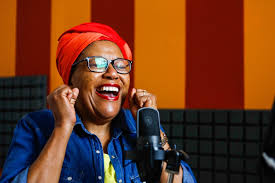
A Great Voice from the Motherland: Sibongile Khumalo.
The annual Cape Town Jazz Festival is held around Easter time in the Convention Center of one of Africa’s most beautiful cities. When traveling around Cape Town the beauty of the city contrasts starkly with the adjacent huge black township, vivid recollections of the forced evacuation of people of color (eviction is more to the point) from District 6 and subsequent relocation, and the ongoing scars left by apartheid as the country struggles with those wounds to build the perfect democracy envisioned by wise men like the great Nelson Mandela, the beloved Madiba.
Any trip to South Africa for a visiting jazz enthusiast quickly reveals that even during the dark days of apartheid the country was blessed with clearly the oldest and most vibrant jazz scene – particularly where that regards the number of exceptional jazz artists – jazz history of any country on the African continent, bar none. That history not only reveals great instrumentalists like the most well-known figures Hugh Masakela and Abdullah Ibrahim (formerly known as Dollar Brand) and the important historic SA bands the Jazz Epistles and the Blue Notes led by the edgy and distinguished pianist Chris McGregor, but also such important artists as saxophonists Kippie Moeketsi, Dudu Pukwanna, Winston Mankunku Ngozi, trombonist Jonas Gwangwa, and trumpeter Mongezi Feza, but also such contemporary figures as pianists Hotep Idris Galeta and Andile Yenana, and bands like Voice and Vivid Afrika. On the vocal side are such important figures as Miriam Makeba, Nancy Jacobs & Her Sisters, Dorothy Masuka, and Dolly Rathebe.
The most important contemporary South African woman singing jazz is Sibongile Khumalo. And therein lies a distinction; notice I didn’t say jazz singer, but instead a woman singing jazz. Ms. Khumalo is blessed with a gorgeous, operatically-trained voice that is as comfortable singing arias and pop songs as it is rendering jazz compositions. During a trip to the 2007 Cape Town Jazz Festival one of the highlights was a band led by drummer Jack DeJohnette that he labeled the Intercontinentals. That’s because the band boasted Panamanian pianist Danilo Perez, American bassist Jerome Harris, British saxophonist Jason Yarde and trumpeter Byron Wallen, and the centerpiece, Sibongile Khumalo, who acted as both vocalist and wordless improviser throughout the band’s stunning performance. Following the band’s press conference Suzan Jenkins and I sat down with Ms. Khumalo for the following interview.
The first time we were in Cape Town for the festival – in 2005 – we heard a lot of wonderful instrumentalists but we were also interested in South African jazz vocalists. It was recommended that we get some of your recordings. So we found the record you made at the Market Theatre, then I subsequently ordered one of your classical recordings online.
Sibongile Khumalo: The one that came out in 2005.
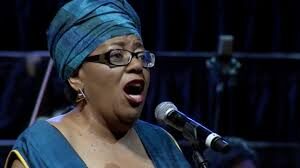
Yes. It was Duke Ellington who described Ella Fitzgerald as being “beyond category”. It’s obvious that you’re beyond category as well. Tell us about the broadness of your approach to music.
Phew… In 1991 leading up to ’92 I’d been doing concerts with a symphony orchestra, doing oratorios, doing recitals, but also working with a brilliant jazz guitarist who passed away a couple of years ago named Alan Qwela. Between Alan Qwela and another jazz vocalist who also passed away a year ago I was exposed to jazz as a genre – as a potential for expression. At some point people say ‘…you have such a wonderful voice, why don’t you record something..?’ I’d be like ‘what am I going to record; I just sing what I sing…’ At that stage, early in my career, I didn’t feel like I was singing anything that I felt was important simply because – maybe that’s not the right word – I wasn’t saying things that I had been taught to sing. I was singing “Messiah,” I was singing “Elijah,” some arias from operas from here and there… But it was not something that I thought I could put down in a recording for posterity. I felt I needed to have a voice, some kind of language of my own but I didn’t know what that was.
Pop music, South African pop music – the way that Yvonne Chaka Chaka, Brenda Fassi, Sipho Mabuse… and all those groups were big as well, there was a whole circuit of festivals the same way as you have jazz festivals at the moment. That also was not something that I felt I could quite speak to. So it kinda like happened organically, I started drawing from those kinds of elements that I’d grown up with of choral music, of some of the classical stuff, and I put together a show called “The 3 Faces of Sibongile Khumalo” in ’92. In that program it was elements of the classical world that I’d come from, elements of the jazz that Alan and Sophie had exposed me to, and some of the traditional stuff that I grew up with in the township [Soweto]. And I did bits and pieces of all of that, just doing some Bach, doing some of the choral work – I didn’t see it as scat back then — but incorporating some of the stuff from the operas on top of the improvisations that the guys were doing. It was kind of happening like that. Over the years that has kind of evolved and developed slowly, gradually. Then I sort of fell back to my comfort zone again and I started doing some of the more sort of easy on the ears sort of things with the album before the classical one, called “Quest,” which was drawing on some of the old South African jazz standards without going into the whole sort of stretching out – just singing the music and having a good time with it.
Until two years ago when I was challenged in a sense… Jack said ‘I’d like to work with her…’ I said ‘OK, Jack DeJohnette wants to work with me…’ OK, we’ll see about that; that was my attitude initially. A year ago I got this call ‘we’ve found an opportunity to get this thing going for you and Jack in March 2007 [Cape Town International Jazz Festival]…’ I said ‘March is fine, it’s cool, it’s OK…’ Three months ago I get this call from Jack DeJohnette and I said ‘alright, this is happening…’ I had to start thinking about this; the conversations happened, the conversations happened, and we shared the music, sending each other discs and songs and I started listening and I was thinking to myself ‘I knew Jack DeJohnette was deep, but this is deep, how am I going to deal with this stuff?’
I’m told about Danilo Perez, I’m told about Jerome Harris… Jason [Yarde] I’d met and worked with in the U.K. a few times, Byron [Wallen] I was aware of but not too closely. So I’m thinking ‘OK…’ I talked to people here and told them Jack DeJohnette; this is happening, wada, wada, wada… So I got asked the question ‘well who’s in the band?’ ‘The pianist is a guy called Danilo Perez and Jerome Harris… They said ‘who?’ I said ‘Danilo Perez…’ My son in particular… I told him I’d listened to [Danilo]’s music, he’s such a beautiful player…’ My son said ‘he’s a what? Ma, do you hear yourself?’ I said ‘[Danilo] sounds good; he’s very nice actually…’ My son said ‘Ma, he’s awesome… he’s an awesome musician, are you listening?’ I said ‘yeah, OK, he’s great, sure…’
So that’s how this journey has been to this point. My approach, coming back to that long-winded answer to your question, my approach is informed really by where I come from. It was all of that. What’s happening though with this is that all of these things sometimes happen in a song. Before it was the classical element, it’s the choral, it’s the jazz bit, and it’s traditional… sometimes in the same song everything kind of comes together.
[Which aptly describes what she brought to the Intercontinental project]
Jack describes me as an improviser… I’ve never thought of myself in those terms. And I think it’s largely when you work with people who trust you invariably you have to trust yourself. I have had to look at myself and say ‘oh, so there’s something going on in there, what is actually going on?’ ‘OK, I’ll stretch a bit more, I’ll investigate, and I’ll interrogate this a bit more. The rehearsals have been particularly telling. I wish we had recorded some of them; they’ve just been an incredible journey of discovery for me.
You referred in the press conference to the isolation of the old days in South Africa, pre- 1994 [democracy] creating kind of an inward viewpoint, musically speaking. What do you think that meant for South African music and musicians once this new democracy opened things up?
Initially… we went through a period of confusion, a period of transition which kind of manifested in a sense a sort of confusion about what it was that we needed to be saying because prior to 1994 it was clear we saw ourselves – some of us – as visionaries, or as social commentators, or just being the musicians that were put there to give solace to the nation, or something like that. The message was pretty clear that we were fighting against Apartheid; it was a kind of… cultural activism of sorts. After ’94 it tended to get a bit blurred, a bit confused, because suddenly… ‘Yeah, what are we supposed to be talking about?’ Some people felt guilty about singing about love, or talking about love for instance. Because if you think about a certain song, it’s a love song but it talks about the order of the day, because the song says ‘When the sun sets I will come looking for you… when the sun sets I will look for you in the prisons, in the hospitals, on the sidewalks…’ because that’s where you might have been dumped by the police… So suddenly it was like ‘what are we supposed to be talking about?’ So there was that transition which sort of manifested in some kind of blurred message about what we were doing.
Then when that sort of settled down, suddenly anything and everything was possible and you have young performers who sing love songs, who sing to their mothers, who sing about the children, who sing about AIDS, who perform about whatever message really grabs them, not just from a political standpoint or a social point of view where you need to deal with crime or poverty or AIDS, but to sing about personal things, to do a ‘dear diary’ kind of thing with their music. So that’s what’s happening now, the world has opened up; our world view has opened up. And also this interaction with other people just makes you realize more that actually you’re not so unique after all, you know as an artist you’re interested in the world around you… your neighborhood, your communities yes, but also you have personal issues to deal with as an artist and that’s what’s been happening a little more.
Suzan Jenkins: As you were talking about how you did or didn’t see yourself it makes me wonder whether you were constrained because you came up through a more classical kind of upbringing, if you were constrained by what’s on the paper, this is how you go about doing things; then all of a sudden your brother kind of threw things in the mix and you started hearing more improvisation and whether or not that kind of broke those constraints – ‘hey, I’m supposed to be reading what’s on the paper but actually I know that people improvise on a theme and maybe I can do that…’ That’s just my observation and I’m wondering if you’ve ever thought about that?
No, the constraints came more from just being in the environment socially. The piece of paper still does put some limitations to how you think you can let yourself go. Opera for instance, you’re not looking at a piece of paper but there are certain traditions which, thank God, a lot of opera singers are now challenging and breaking down because it’s not just the beautiful sound that you produce as an opera singer, you need to act, you need to put another dimension to the character; that’s what’s happening to a lot of opera at the moment, so that’s one area where there used to be those kinds of constraints, but not really. The constraints that I was referring to have to do with how Apartheid manifested in the Black person’s mind in this country particularly: that sense of self-loathing and self-hate, and just lack of self-esteem – ‘can I actually do this, am I good enough to do this, why are they asking me…’ that kind of thing.
Jack DeJohnette says he wants to work with me: ‘really, are you sure…’ And it takes awhile to get out of that and say ‘oh, yes, right… there’s something I’m saying here that is making sense to somebody…’ I did an opera role in Oslo about three years ago and one of the guys in the chorus said to me ‘you actually don’t know how good you are, do you?’ Even as recently as 3 years ago there was still the sense that ‘I’m just a little South African girl; please don’t ask me to…’ Yeah, it still happens and one has to constantly work against that self-battering, like a typically abused person. One of the things I learned a few months ago was to change the story in your head all the time, be constantly speaking up to yourself rather than down, and it’s working. I guess everything happens for a reason at the time and this particular experience [Intercontinental project] is working to affirm that for me. It’s kinda like ‘…yesss, sure, it’s working…’ And also being able to have fun with it besides the risk-taking and just being a way of not putting yourself into those little boxes and being insecure and unsure and thinking ‘what do they see in me?’; being able to say ‘you have something to say…, its not right or wrong, it is what it is, so accept that, embrace that, go with it, move forward with it… That’s the kind of boxed in sense, those kinds of constraints as you refer to them , that continue to be a challenge for this country, that will be for this generation at least. Our children fortunately didn’t have to deal with Apartheid the way we did, so they… My daughter knows what happened in ’76 from the history books but my 16-year old is like ‘yeah, OK, so it happened, so am I supposed to carry your baggage for you [laughs] kind of thing…?’
I must tell you a quick story: [my son] came home from nursery school one day, he was about 6, and he was telling me about these girlfriends that he’s got. So I’m looking at this child and thinking ‘you have a girlfriend?’ He says ‘I’ve got two and they really are cute mama..’ Now I’m looking at this child and thinking he’s telling me he’s got two girlfriends and I wanted to ask if they are Black girls or White girls because it’s a mixed nursery school but that’s my stuff, you know? So I’m thinking how do I ask this stuff, so I ask the names of these children, it’s Christine and Natasha, and I’m thinking ‘there’s no Black kid named Christine or Natasha, but I need to be sure. So I ask ‘what’s the color of their hair…’ And he says ‘oh the one is blonde and the other one has got red hair…’ And I’m like ‘oh shit [laughs]…’
But that’s your reality… and not his.
No, it’s not his, he’s just seeing these beautiful little girls and it’s OK…’ But that’s part of the joy, it’s going to take this generation to really get [separatism] out of the way; they need to know – they need to learn so they don’t repeat it and recycle it to other people, however we need to do it in such a way that even as we teach them about what happened, we must not teach them to be that, which is an oppressor, which is a dictator…. And that’s the challenge, but that’s the beauty also of being in this kind of environment at this time because it just makes you so aware of the possibilities of a positive life force.
We’ve done a few [WPFW; Washington, DC] radio series on South African music, this will be our sixth show. As we talk about the music, the thing that continually hits me is the spirit of possibility. Right now you just talked about oppression. From our perspective the word oppression doesn’t even begin to describe what was happening in your country but there’s always been this incredible spirit of possibility and hope [in SA]. As a practitioner, an activist, a woman, a vocalist, can you give me some clue as to how that continued to happen even in the darkest of times… and now?
As an aspirant opera singer, in my last years of high school and university when I was considering my career options, I remember my dad – who was a singer himself involved in music a lot – discouraging me from following a career in opera because it would have meant leaving South Africa because there were such limited opportunities for people of color. I said ‘but how can you say that, because that’s all I know?’ I want to sing, I can teach… and I did teach, I worked as a researcher, I worked as an administrator but essentially I wanted to sing, but that was one of the first things that gave me a wake-up call about what this was. I was like a child wanting to pursue a career in music as a performer.
When I finished university, whatever decisions – because I was so conscious about what was happening around, virtually all of the decisions I made about what I needed to do were politically-driven decisions rather than just career related-decisions. There was no way I was going to teach in a normal primary school because that was government [controlled] but when the opportunity came to teach, or rather when the thought came to teach I ended up working in community arts centers where the money was erratic, you didn’t know whether you were going to get paid at the end of the month or not because we depended upon sponsorships and donations. You couldn’t even plan three months ago, you just were there being present in that moment to do what you needed to do.
If you went and performed somewhere out of Johannesburg and had to drive there you had to go on the road… they have now these one-stop places on the road and you can go to a Wimpy’s [fast food restaurant] and sit down and eat… Back then they had these little shops on the road run by Afrikaners and they had a little window around the back and that’s where you bought your food, that greasy bacon & egg sandwich with a cold polystyrene cup of coffee… things like that. If you needed a toilet you were lucky if you got one, and you would get to your destination that evening and have to perform and give joy to your audience. They don’t know… yes they know that your travel may have been rough, but they didn’t pay that attention, they wanted to be entertained, they wanted to have a good time… So its things like that.
As a woman I’ve been very lucky I suppose in that I’ve always worked with guys who saw me firstly as a musician and not as a woman. I’ve heard of stories of female colleagues who’ve been subjected to all kinds of unwelcome sexual overtures from their colleagues and for whatever reason I have not had that. I see the music first, I see you as my equal, as my colleague, as somebody who’s out there to do what we all have to do equally and whenever there’s been somebody who’s got funny intentions I have a way of looking at people and its like ‘so what is your problem’ [laughs]? I’ve been very fortunate [laughs]. But I know of women who’ve had to contend with rubbish like that and it’s hard…
I think part of it for me personally has been the fact that I always describe my father as the first feminist I ever knew. It was just his attitude to women that he expected me to pull my weight like everybody else. He expected me to be better than my brother. I don’t expect to be treated differently because I’m a girl, I pull my weight like everybody else. People forget sometimes that I’m a women, we’re there, and we’re doing the work that needs to be done.
Select Sibongile Khumalo Discography
Ancient Evenings, Columbia (1996)
Live at the Market Theatre, Sony (1998)
Immortal Secrets, Sony (2000)
Quest, Risa/Sony (2002)
Sibongile Khumalo, Sony (2005) (Brahms and other classical compositions, including by South African composers)
The Greatest Hits, Sony/BMG (2006)
South African jazz is unfortunately hard to come by through U.S. retailers. The best online source for South African music and African music in general is Sterns Music www.sternsmusic.com.
An excellent source for general information, including artist bios (on those mentioned in the preface to this interview and others) on South African jazz in particular and SA music in general: www.music.org.za.

